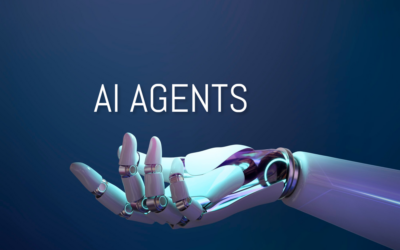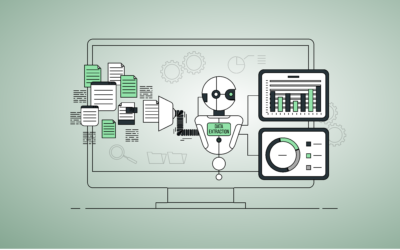Table Of Content
Business leaders create machine learning use cases after establishing the business value and project resources. Developing a robust data strategy is imperative to effectively scale a machine learning project. This involves addressing diverse data management aspects such as collecting, curating, exploring, and processing. In addition to this, it is crucial to incorporate MLOps practices, foster a data-driven culture throughout the organization, and implement appropriate governance practices.
The following paragraphs are an abstraction of the topic illustrating aspects to consider when discussing the design of machine learning systems for business.
Machine Learning Data Strategy
Machine learning can bring huge benefits to a company’s product line, but only if methods to collect and prepare relevant business data to feed the ML project have been established. ML systems must collect high volumes of data that must be cleaned and complete (without gaps) to use for training and running the ML models in real-time to create value for the business. These processes usually introduce technical challenges to the development and data operations (DataOps) teams.
In order to improve predictions, the ML models must be designed to gather large amounts of data and provide enough detailed information (behavior, patterns, relationships) and its interaction with the system to satisfy the required objectives criteria.
Feature Engineering
It is critical to plan data exploration methods that help understand the data relationships, extract features from data insights, create correlations among such data, validate and optimize iteratively until improving model performance, and select the model to deploy.
Feature engineering is about transforming raw data (through mathematical transformations) and building features (data attributes or characteristics) that are relevant and useful for training the ML prediction model.
Organization Data Culture
Data is generated in many ways and must be queried from different sources to build data sets for machine learning models. Therefore, it is important to avoid data silos by upgrading existing systems and creating a culture of sharing data (databases) across the organization.
Agile teams following DevOps practices and principles can promote a mindset and culture of innovation that encourages machine learning capabilities. In addition, agile leaders promote improving user experiences and creating outcomes following agile principles.
MLOps Teams Considerations
Enterprises planning machine learning projects must consider the team and available expertise. ML systems have many changes in data and require teams that can embrace data quality issues, track model performance, experiment with new data and algorithms, retrain models, and deal with data inconsistencies and dependencies.
ML projects also have higher system-level complexities than software projects, such as ongoing maintenance costs and other system-level risks that often accumulate as technical debt. Therefore, the ML team is critical for the success of the project. MLOps are the capabilities, culture, and practices (similar to DevOps) where machine learning development and operations (MLOps) teams work together across their lifecycle to handle unique complexities and continuously operate them in production.
Machine learning systems design require a data science organization with strong technical skills. ML projects benefit by forming a well-structured team composed of data engineers to build pipelines (ingest and transform data), ML engineers with programming skills to build predictive models (apply algorithms to data), and data analysts (domain experts) to build an end-to-end solution.
On top of that, managers, architects, directors, and tech leads are needed to support the team. Also, enough team contributors with specific domain knowledge about the business and statistical background enable them to experiment with ML models. At Krasamo, we have dedicated teams of machine learning consultants who work as partners with clients and grow their machine learning projects.
Infrastructure and Computing Resources
ML projects require actionable data as well as interactive visualizations to perform traditional analytics and deploy ML models. ML projects advance quickly by adding public cloud services with the appropriate computing and storage infrastructure to manage data (structured or unstructured) and building data lakes and data warehouses (BigQuery).
When choosing cloud computing services, ML engineers consider the company’s resources and objectives to leverage the tools, modeling software, machine learning APIs, and data services, and to deploy its models effectively in a data warehouse. Also, using these services helps to experiment with pilot projects, build specific features, and create machine learning with TensorFlow.
It’s worth keeping an eye on data strategies for when designing machine systems and paying careful attention to the data architecture decisions, queryable data sources, messaging systems, data models, schema, and many other details.
Organize Real-Time Data for Machine Learning
ML engineers must consider building a Pub/Sub messaging system to establish the collection of real-time data. A publish/subscribe (Pub/Sub ) system is an asynchronous messaging system especially for ingesting and distributing streaming analytics and data pipelines. Pub/Sub messaging integrates with many Google Cloud Platforms (GPC), simplifying data processing and integration.
Planning Data Governance for ML
Designing machine learning systems also requires careful planning to secure and control access to data, security, privacy, compliance, and integrity of the data flowing through the systems. It is important to protect certain portions of data or remove sensitive data from the data set before training ML models. In other instances, using a subset of the data is considered to avoid using sensitive data that may expose the business or create risk.
Data teams identify sensitive data and follow best practices and techniques to protect the data by removing, coarsening, or masking data to avoid affecting the model negatively. It is a good practice to document these decisions throughout the journey. Teams also adhere to regulations and comply with standards and policies.
Take Away
In conclusion, designing effective machine learning systems for business requires a robust data strategy, feature engineering, MLOps practices, a data-driven culture, skilled team members, and careful attention to infrastructure and data governance. Implementing these best practices can help businesses unlock the full potential of machine learning to drive innovation, improve user experiences, and create value. With the right team and resources, organizations can overcome the technical and organizational challenges involved in designing machine learning systems and realize the benefits of these powerful tools.
ML engineers at Krasamo have experience creating machine learning models, data pipelines, IoT development, mobile applications, and cloud computing infrastructures. Contact us for more information and learn how to benefit from a local machine learning consulting partner.
Krasamo is a Dallas-based software development company with more than 12 years of experience catering to medium to large US corporations, offering various contracting modes that suit customers from any development center in the USA or Mexico.












